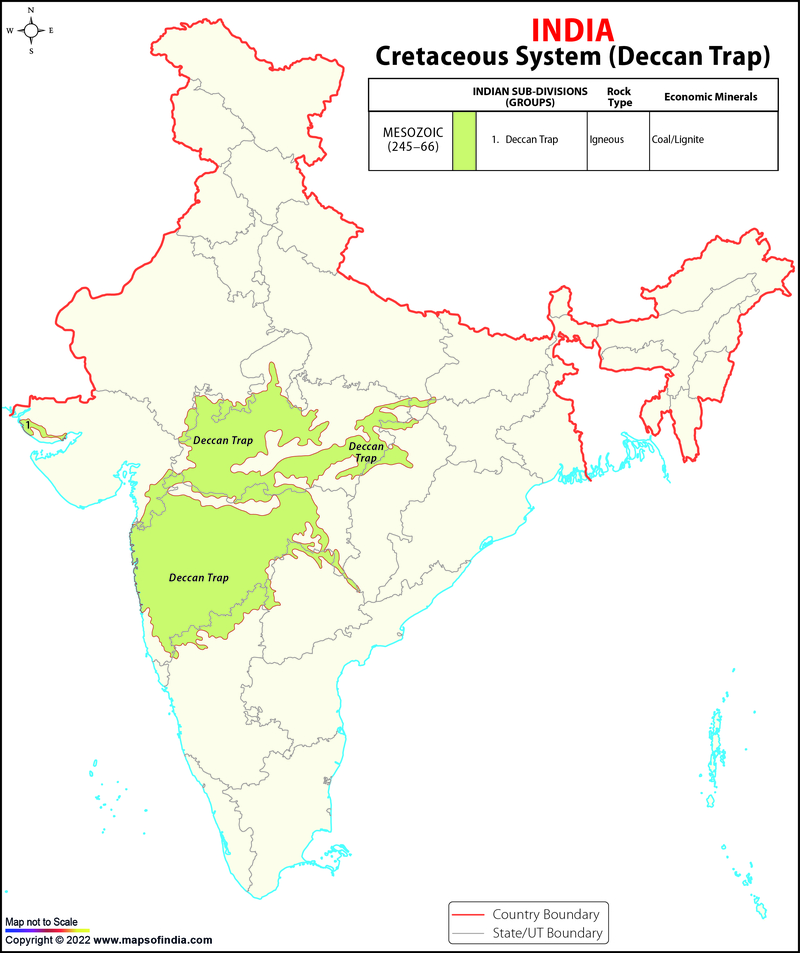The study of the geologic structure of rocks is necessary to know the history and nature of rocks because the presence of minerals and the texture of soils depend on the form of rocks. The oldest and the newest types of rocks are found in the geologic structure of India.
Rocks are usually formed in two ways - one is the primitive rocks formed due to the earth's internal forces, and the other rocks are created by the transformation or erosion and deposition of these primitive rocks.
The rocks of the Cretaceous system (Deccan Trap) are tough because the Deccan rocks are more than 100 million years old.
It is a region in the western part of India whose geological structure is basalt rocks formed in the Cretaceous System.
In the Deccan trap, cotton cultivation is good. Hence, it is also called 'cotton soil'. Since it is made of lava, it is called 'lava soil'. It is one of the largest volcanically formed landforms in the world.
India's Deccan Traps are formed from flat-basalt lava flows over 6,600 feet, covering an area of about 200,000 square miles.
The thickness of the Deccan Trap is even more significant than the Western Ghats. About 95% of the lavas within the Deccan Traps are basalts. Other rock types are alkali basalt, lamprophyre, and carbonatite. Lava layers in the Deccan Traps contain beds of fossils. Mantle xenoliths have also been recorded at some places in the Deccan Traps.
The historical Deccan trap-rocks were formed during the Mesozoic era and happened in the Cretaceous period. At the same time, there was a volcanic eruption in peninsular India. The volcano's explosion caused a massive outbreak of lava, and the red lava got dissipated over an area of about 5 lakh kilometres. Due to this, the shape of the Deccan plateau got formed. The black soil (Regur soil and lava soil) is also formed from the Deccan rocks.
Along with the minerals, some chemical characteristics are also found in the rocks of the Deccan Traps. The rocks of the Cretaceous system are found in most parts of Maharashtra, Gujarat, and Tamil Nadu. Elements like iron and traces of minerals like manganese are also found in the Deccan trap rocks.
These rocks are used in the construction of roads and buildings.
Last Updated on: November 13, 2025

